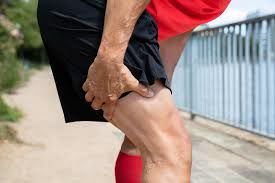Hamstring tendinopathy, commonly known as hamstring tendonitis, is a common source of hip and buttock pain. It typically presents as pain stemming from the “sit bones” or ischial tuberosity of the pelvis where the hamstrings originate.
Hamstring tendinopathy can be caused by overloading the tendon, either suddenly by heavy lifting/ jarring or it can be a gradual overuse over time. Tendon overload can cause and inflammatory response leading to constant pain and soreness over the first few weeks as part of the normal healing response. Poor initial management and further overload may cause a failed healing response leading to persistent tendinopathy. This is where the tendon is stuck in a constant cycle of inflammation and may eventually become degenerative. Neovascularization can occur in persistent tendinopathies which is characterised by an increase in capillaries and nerve endings throughout the tendon. This is what makes the tendon more and more sensitive over time.
Symptoms of Hamstring Tendinopathy
- Pain on the ischial tuberosity - particularly when sitting on hard surface - may radiate down the back of the leg
- Pain that is aggravated with prolonged sitting, bending over at the hip, heavy hamstring exercises (e.g deadlifts) and/ or walking downhill.
- Pain that is usually worst at the start of exercise and following exercise
Physiotherapy for hamstring tendinopathy is and individualised approach that may include:
- Advice on managing the amount of load the tendon is exposed by modifying activities/ exercise.
- Soft tissue massage
- Dry needling
- Shockwave therapy
- Rehab exercises
- Force frame analysis
Hamstring tendon issues can be a literal pain in the bum! But they don’t have to be. Your physiotherapist can come up with an effective and comprehensive treatment plan depending on your specific needs.

